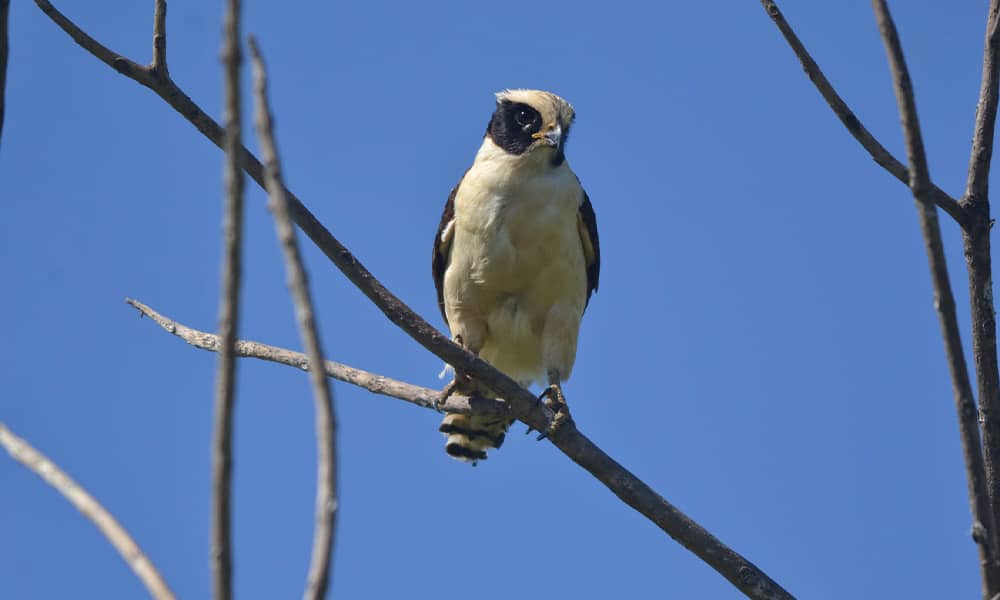Falcons, as a group, are towards the top of the ‘cool birds’ list. Now how about one that enjoys a good laugh and mostly eats snakes? That has to be cool. Let’s meet the laughing falcon.
I usually don’t dive too deep into scientific names because they make me nervous. I can never remember if they’re in Latin or Greek, and I’m afraid I’ll make some declaration about one and I’ll end up being wrong. That being said, I have some vague memory of somebody telling me that part of the laughing falcon’s scientific name, (Herpetotheres cachinnans), made reference to its diet of snakes, so I thought I’d try to confirm that and share it with you.
It turns out that it’s even better than that. I found a source that says the first part of the name, Herpetotheres, is Latinized Ancient Greek (yikes) for ‘reptile’ and ‘to mow down’ and the second part of the name, cachinnans, is Latin for ‘laughing aloud.’ They knocked that one out of the park. It’s a bird that mows down reptiles and then laughs aloud.
Its signature call is the reason for both its English name and Spanish name, guaco (sounds like gwa-co). Often at dawn and dusk, it commences its startling loud ‘laugh’ with a repetitive wa! or gwa! call. Frequently, after a few seconds, it will add the second note co! and continue with gwa-co!, gwa-co! for a bit. Sometimes it will be a duet of two birds calling in unison.
Laughing falcons are found throughout most of Costa Rica. They can be spotted in broken forest, forest edges, or in one of the few trees remaining in an open pasture. They tend to avoid mature forest. They’re often perched on the upper branches of a tree, scanning the ground for food.
Their diet is unique among raptors of the neotropics because snakes comprise the vast majority of their diet. A review of the literature on laughing falcon diets published in 2014 found that 77% of prey records reported were of snakes. They even eat venomous snakes such as coral snakes. If you need further, less scientific, evidence of their snake laden diet, search for laughing falcons on social media. You are bound to find shots from both amateur and professional photographers of laughing falcons with snakes hanging from their beaks and talons.
I can still remember the first time I heard a laughing falcon calling from the edge of a forest while I was still new to Costa Rica. My Tico co-workers recognized it was a guaco immediately. I learned that day there is a popular belief that when you hear a laughing falcon, it means death is near. Not so funny!
I do not have many camera trap videos of laughing falcons. I’d imagine some climbing equipment and a frequently used branch high up in a tree would result in some amazing videos. I have recorded a few though, a series of videos where one was drinking from a puddle and a few while monitoring a jabiru nest. I’ll include those clips in the video below.
About the Author
Vincent Losasso, founder of Guanacaste Wildlife Monitoring, is a biologist who works with camera traps throughout Costa Rica. Learn more about his projects on facebook or instagram. You can also email him at: vincent@guanacastewildlifemonitoring.com







